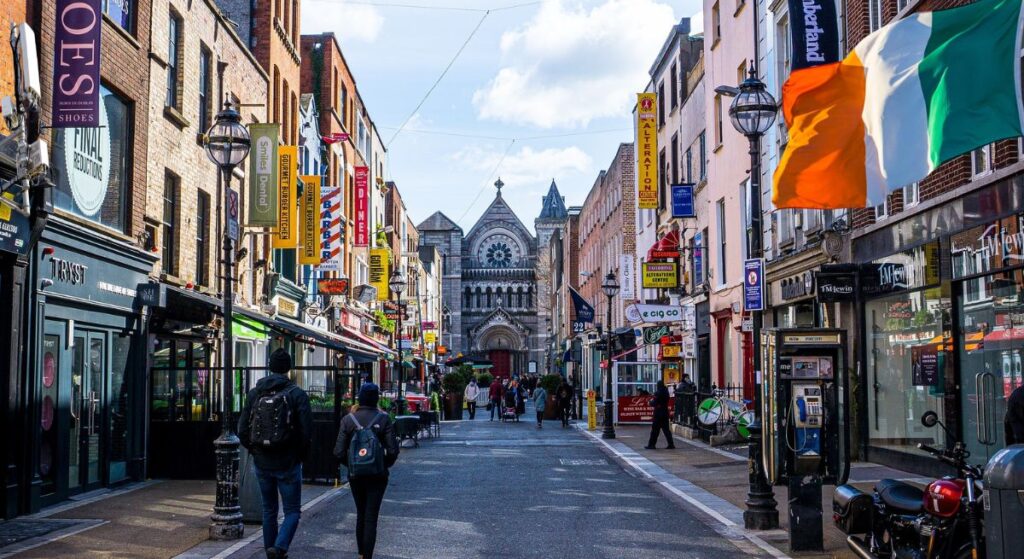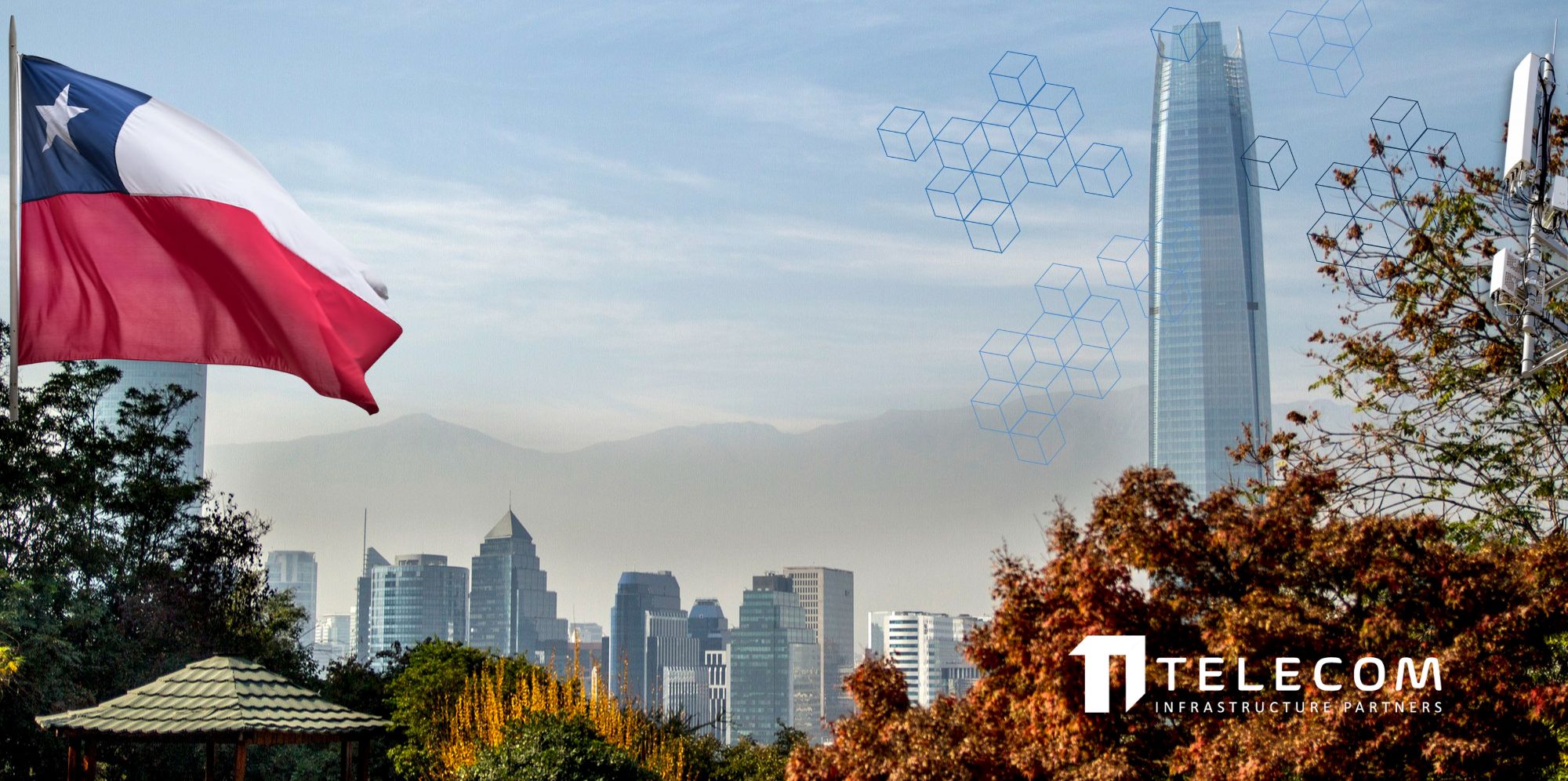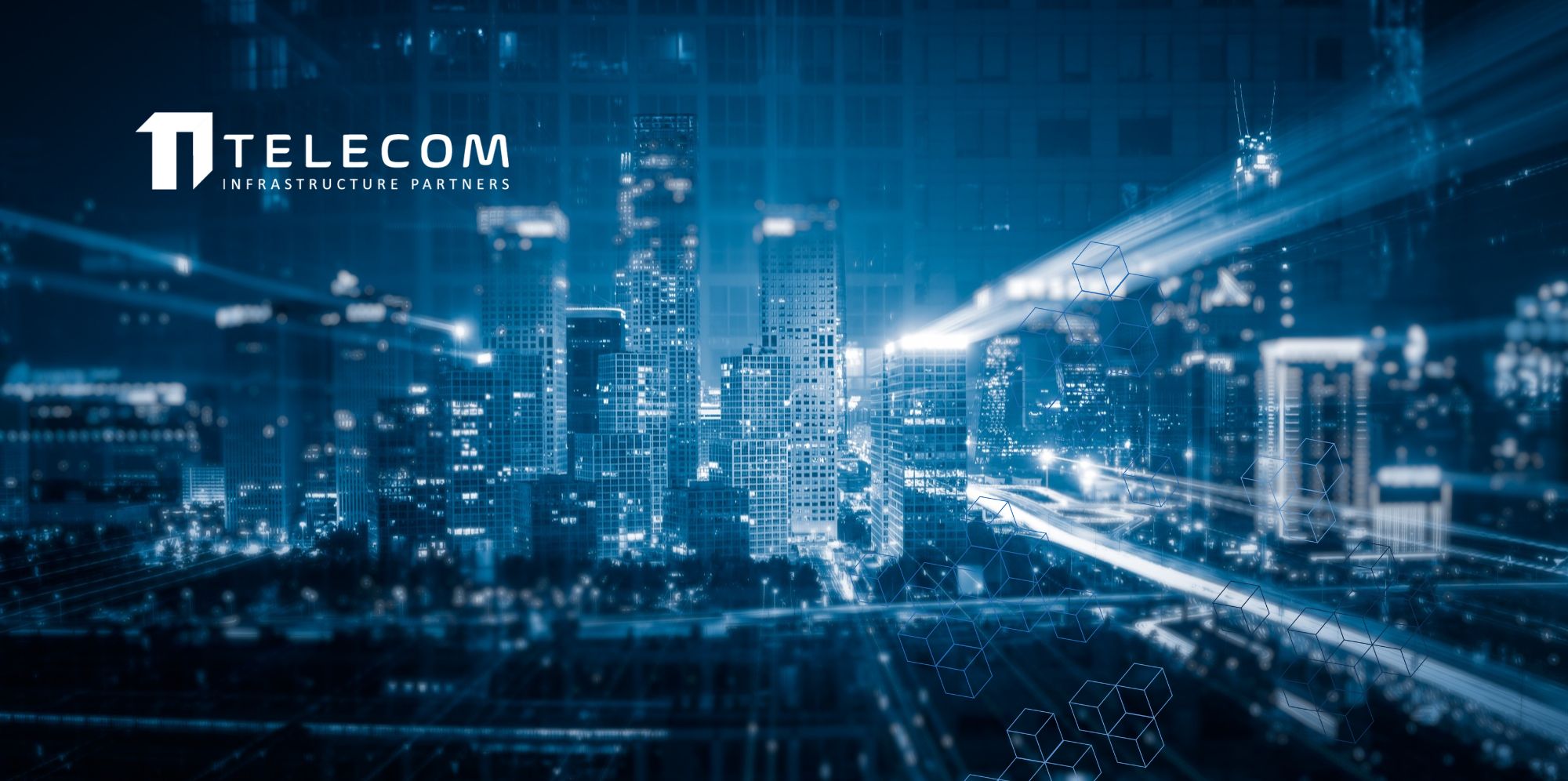Telecommunications in Ireland have undergone a long and dynamic evolution, shaped by the country’s rich, turbulent history and its unique location on the world map.
Ireland is part of the British Isles Archipelago and is the third-largest island in Europe, following Iceland and Great Britain. It is bordered to the north and west by the Atlantic Ocean and separated from Great Britain to the east and southeast by the Irish Sea, with a diverse and rugged coastline.
Ireland has been inhabited for approximately 7,000 years and has experienced numerous invasions, resulting in a rich blend of ancestry and traditions. The northern part of the island is called Northern Ireland, which is part of the United Kingdom. Most of Ireland belongs to the Republic of Ireland, a sovereign state with both Irish and English as official languages. The first Irish government was established in 1921 following the signing of the Anglo-Irish Treaty, and the first Constitution came into effect in 1937, which remains in force to this day.
Telecommunications in Ireland operate within a regulated competitive market, offering a wide range of digital services.
RTÉ produces and broadcasts programs in both English and Irish across radio, television, and the internet. The radio service began on January 1, 1926, and regular television broadcasts started on December 31, 1961, making RTÉ one of the oldest continuously operating public broadcasters in the world.
There are three main telecommunications operators in Ireland: Eir, Vodafone, and Three.
Eir was founded in 1984 under the name Bord Telecom Éireann. It is the largest telecommunications operator in Ireland, with branches in Northern Ireland and Great Britain. The company was state-owned until its flotation on the Dublin and New York stock exchanges in 1999. The company is registered in Jersey.
Vodafone, short for “voice, data, phone,” is an international mobile phone operator with headquarters in Newbury, UK, and Düsseldorf, Germany. Vodafone is the second-largest telecommunications company in the world, after China Mobile. It operates in 27 countries and has partnerships with local networks in another 33 countries.
Vodafone was established in 1983 as a subsidiary of Racal Electronics PLC, a British company founded in 1950 that produced radars and electronics, obtaining a license to build the first mobile phone network in the UK that same year. Racal is now a conglomerate of around 150 independent companies, operating through subsidiaries in the UK, USA, Europe, and Asia. The precursor to Vodafone was a Racal subsidiary, British Communication Corporation Ltd., founded after World War II by Tadeusz Heftman and British security officer J. Tims, following the dissolution of the Polish Military Radio Engineering Workshops.
By July 1999, the government had sold virtually all of its shares, and the company debuted on the Irish Stock Exchange, London Stock Exchange, and New York Exchange.
In 2015, the company rebranded and changed its name to Eir. The group includes the French telecommunications operator Free and the Italian Iliad Italia.
Three is an international 3G mobile phone operator owned by Hutchison Whampoa. Its name comes from the third-generation telephony services it offers. In Ireland, it operates using Vodafone’s national roaming network. In response to increasing digital demands, both companies have focused on innovation and expanding their services, aiming to enhance competitiveness while improving the quality of life and work efficiency in Ireland.
Eir reported a revenue increase to €1.296 billion, a 4% rise from 2022. The company also announced a significant expansion of its fiber network, which now covers 1.2 million homes and businesses across Ireland, as well as the extension of its 5G network, offering ultra-high-speed data in 600 towns and cities. These efforts are part of Eir’s broader strategy to provide cutting-edge technology access to a growing number of residents in Ireland.
Vodafone Ireland Business, meanwhile, announced the addition of 120 new jobs as part of a €35 million investment over four years. This investment aims not only to create new jobs but also to develop key areas such as cybersecurity, managed services, and the Internet of Things (IoT), in response to growing market demand for advanced ICT solutions.
Both companies, through their investments, emphasize the importance of digitalization for Ireland’s economy and society. Minister for Enterprise, Trade, and Employment Simon Coveney welcomed these initiatives, highlighting that the digitalization of all business sectors is a priority for the country.
It’s worth noting that the first transatlantic telegraph cable was laid on the Atlantic Ocean floor in 1866, linking Foilhommerum on Valentia Island in western Ireland to Heart’s Content on the east coast of Newfoundland, North America. This drastically reduced the time it took to send messages across the ocean from 10 days via ships to mere minutes. By the end of the 19th century, a network of submarine telegraph lines connected North America to Europe, owned by British, French, German, and American companies. The 1884 Paris Convention prohibited the destruction or damage of submarine cables, with jurisdiction falling to the courts of the ship’s flag country. Today, 36 nations are signatories to this agreement.
It wasn’t until 2022 that a memorial plaque was unveiled at the site where the transatlantic cable began, honoring the first telegraph message sent from Ireland to North America. Designed by local sculptor Alan Hall, using material from local quarries, the plaque commemorates the history of the telegraph on Valentia and its significance to the island since 1857. Initially, operators transmitted messages using Morse code, but the signal quality was poor, and sending a single character took up to two minutes. The first message sent through the 1858 cable took more than 17 hours. It wasn’t until the 20th century that transmission speeds exceeded 120 words per minute. Nonetheless, London became the global telecommunications center, with at least 11 cables radiating from the station at Porthcurno near Land’s End, creating a web of global communication.
The official EU website reports on broadband access in Ireland. By 2006, all premises in Ireland were expected to have broadband access, as part of a project by National Broadband Ireland. The strategy aims to drive digital transformation across the entire Irish economy and society, ensuring that all Irish households and businesses are connected to a gigabit network by 2028 and all populated areas to a 5G network by 2030.
Despite its geographical location on the periphery of the EU, Ireland is at the heart of the European digital industry. According to ICT Ireland, the Irish ICT sector is not only thriving but also expanding. Nine of the world’s top 10 tech companies have a presence in Ireland. The ICT sector may become the backbone of Ireland’s future economic growth, with corporations like Microsoft, HP, and Google, alongside newer players such as Facebook and Twitter, all establishing headquarters for the EMEA region in Ireland.
Ireland attracts businesses with low corporate taxes and a skilled workforce whose first language is English. Domestic Irish companies have also succeeded in the ICT sector, built on the strong knowledge base and research facilities of Irish universities and research institutes in computing and communications. Ireland aims to strengthen its research and innovation capabilities in ICT by participating in EU-funded research programs, ensuring that ICT drives future economic growth.
Even when not leading projects, leading Irish universities and research institutions contribute to fundamental scientific research in large-scale projects. For example, Trinity College Dublin was a key participant in the N4C project, which aimed to develop and test alternative networking technologies for areas of Europe without high-bandwidth IT links.
Ireland, as mentioned, recognizes that future economic growth depends on ensuring internet access for all citizens, not just those living in urban areas with high-speed connections. Thus, the N4C project focused on developing “delay- and disruption-tolerant networking” (DTN) architectures and related technologies to improve connectivity in remote areas.
Trinity College Dublin was responsible for two work packages that created software and specialized devices for DTN systems. The university worked closely with Intel Ireland, developing and testing ultra-portable, energy-efficient devices, including a solar-powered DTN router designed for rural areas, offering a wide range of wireless connectivity options and advanced power management to reduce energy consumption.
University College Galway participated in a project that aimed to provide internet access to rural and provincial areas of Ireland to combat digital exclusion and support business development – the FAST (Fund for Student Activity) project.
Ireland has demonstrated that knowledge and resource gaps can be filled through effective collaboration and knowledge exchange. While still largely an agricultural country, Ireland’s participation in European research initiatives has proven to be an effective strategy for its own economic growth, while also making an invaluable contribution to the future of the internet – with a focus on coherence, trust, security, and privacy.
Aon Report: Technology and Telecommunications Sector Leading M&A Considerations in Ireland
In Aon’s latest report, the global advisory firm revealed findings regarding mergers and acquisitions (M&A) in Ireland. According to the report, 11% of Irish companies are actively considering engaging in M&A transactions within the next year. The technology, media, and telecommunications (TMT) sector shows the most activity in this regard, with 26% of companies planning such actions. The financial and professional services sector follows, with 17% of firms interested in mergers or acquisitions.
The report highlights that the main motivations for considering M&A are access to skilled workers (31%), improved operational efficiency (30%), and enhanced innovation capabilities (28%). For companies in the TMT sector, the key goal of these transactions is market expansion (46%), while financial sector companies focus on growth in new business areas (37%).
Evolving Risks in M&A Processes
Changing risks are increasingly influencing decisions about mergers and acquisitions. Although inflation remains the primary concern for 56% of Irish companies, it is losing prominence compared to the previous year. Other rising concerns include the lack of sustainable investment options (44%) and high valuations (43%).
Cybersecurity and ESG Gain Importance
One of the key trends identified in Aon’s survey is the growing importance of cybersecurity in due diligence processes. Sixty-two percent of companies now consider technological risks before completing M&A transactions, a 7% increase compared to last year. Larger companies are more likely to conduct comprehensive cyber risk analyses (41%) than medium-sized firms, of which 31% don’t consider these risks at all.
On the other hand, only 35% of companies in Ireland view ESG (Environmental, Social, Governance) standards as relevant in the transaction process, a small increase (2%) compared to the previous year. Nevertheless, 43% of firms still do not consider these issues, indicating that Irish companies lag behind global standards.
Human Capital and Tax Issues Are Key in Irish M&A
The Aon report also highlights the importance of human capital and tax issues in the due diligence process. Forty-two percent of companies identify human capital as a key area of analysis, reflecting the importance of talent in a labor market with historically low unemployment. A similar percentage (42%) cite tax issues as a significant factor in deciding on a merger or acquisition, with a focus on tax rates that will apply to future profits after the transaction.
Sources:
- Ireland (island)
- Telecommunications in the Republic of Ireland
- Cichociemni, elite of sabotage
- Three (mobile network)
- Dynamic development in Ireland – a new digital era
- Transatlantic telegraph cable – a heroic story of perseverance and failure
- CORDIS brings you the results of EU research and innovation
- Aon Report: Technology and telecommunications sector leading in M&A considerations
Glossary of Terms:
IoT (Internet of Things) refers to a network of physical devices, vehicles, buildings, and other objects equipped with sensors, software, and technologies that enable data exchange over the internet. Examples of IoT include smart refrigerators, air quality monitoring sensors, and traffic management systems.
Tadeusz Heftman was a Polish engineer and inventor who made significant contributions to the development of radio technology. During World War II, he collaborated with Polish intelligence and the British SOE (Special Operations Executive) in creating portable radio stations used by the resistance movement.
RTE is a real-time enterprise capable of collecting, processing, and responding to information in real time. The goal of an RTE is to improve operational efficiency by making faster decisions based on current data.
Digitalization refers to the process of transforming traditional processes, documents, and services into digital forms. In businesses, this means converting paper documents into digital ones, implementing data management systems, or automating production and operational processes.
The transatlantic cable is a submarine telecommunications cable used for data transmission between North America and Europe. The first cables were used for telegraphic communication, while current cables transmit data via fiber optic signals, enabling fast information transfer between continents.
ICT technology refers to the tools and resources used for communication and information management, including computers, mobile phones, the internet, and other systems that enable data processing and transmission.
DTN is a type of communication network that can function despite delays and disruptions in connections. This technology is particularly useful in situations where traditional internet networks fail, such as in space or remote and underdeveloped areas.
The TMT sector refers to companies in the technology, media, and telecommunications industries. It is a rapidly growing area of the economy, encompassing businesses that produce software, provide multimedia content, and offer telecommunications services.
Cybersecurity is a field concerned with protecting computer systems, networks, and data from threats such as cyberattacks, data theft, or unauthorized access. These protections include both technical solutions and operational procedures aimed at preventing cybercrime.
ESG refers to principles related to social and environmental responsibility as well as corporate governance, which are considered when evaluating companies and their operations. These elements aim to promote sustainable development and responsible business practices.
Cybersecurity is a crucial element in due diligence processes, especially during mergers and acquisitions. Assessing a company’s IT security and data-related risks helps evaluate potential threats and costs arising from insufficient protection of systems, and prepares strategies for handling cybersecurity incidents.



